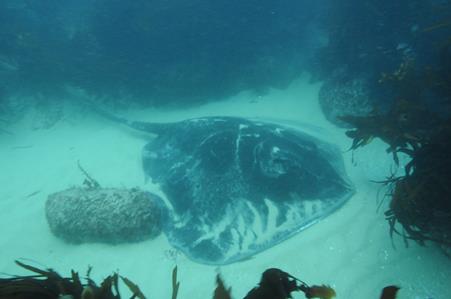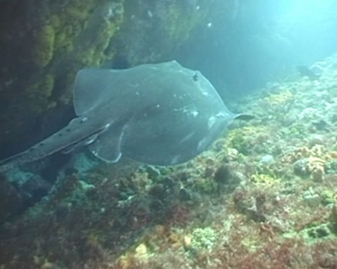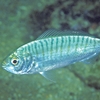General Description
A huge stingray with a relatively deep rhomboidal disc, slightly broader than long; disc smooth with diagonal rows of pale pores on sides of head; tail short, depressed with a broad base tapering towards spine, cylindrical beyond spine, with a large, sharp, finely serrated spine; tail of adults with large tubercles and thorns on midline before the spine. Greyish-brown, darker above eye and on tail tip, underside pale. To a length of 4.3 m, disc width to more than 2.1 m, weight to 350 kg.
Biology
One of the largest stingrays in the world. It is common in shallow water off beaches and in estuaries during summer months. Although not aggressive, the spine is venomous and capable of inflicting a painful and sometimes fatal wound. They feed on benthic invertebrates and fishes, and are taken as bycatch in commercial fisheries. They are live-bearers - females give birth to 6-10 young per litter.
Habitat
Sandy bottoms and rocky reefs in coastal areas, shallow bays, harbours and estuaries, in depths of 0-150 m.
Reefs
Soft substrates
Distribution guide
New Zealand and South Africa. Southern and eastern Australia.
Species Group
Sharks and rays › Stingrays, stingarees and allies
Depth
Shore (0-1 m)
Shallow (1-30 m)
Deep ( > 30 m)
Water Column
Max Size
2.1 m
Diet
Carnivore
Harmful
Possibly more dangerous to humans than other rays due to its size and the large venomous serrated barb on tail that has caused at least one death in Australia.
Commercial Species
No
Global Dispersal
Recorded in Australia
Conservation Status
- DSE Advisory List : Not listed
- EPBC Act 1999 : Not listed
- IUCN Red List : Not listed










